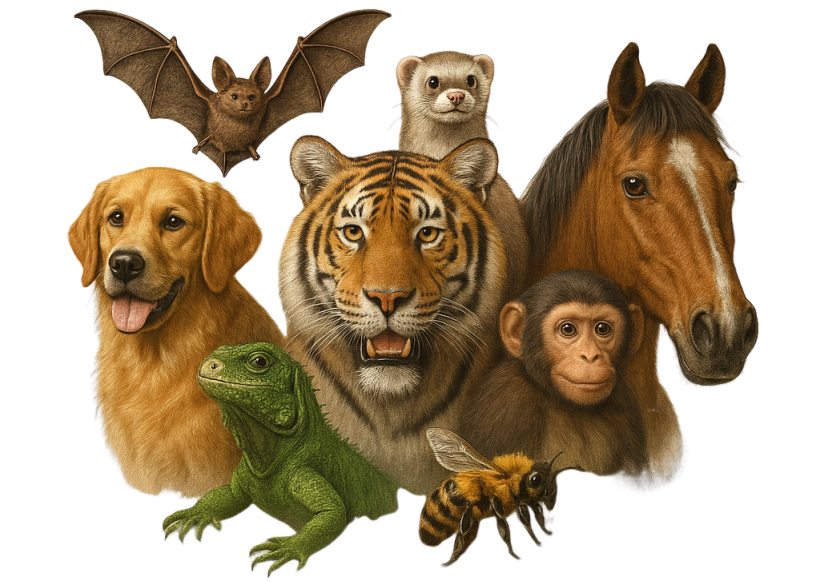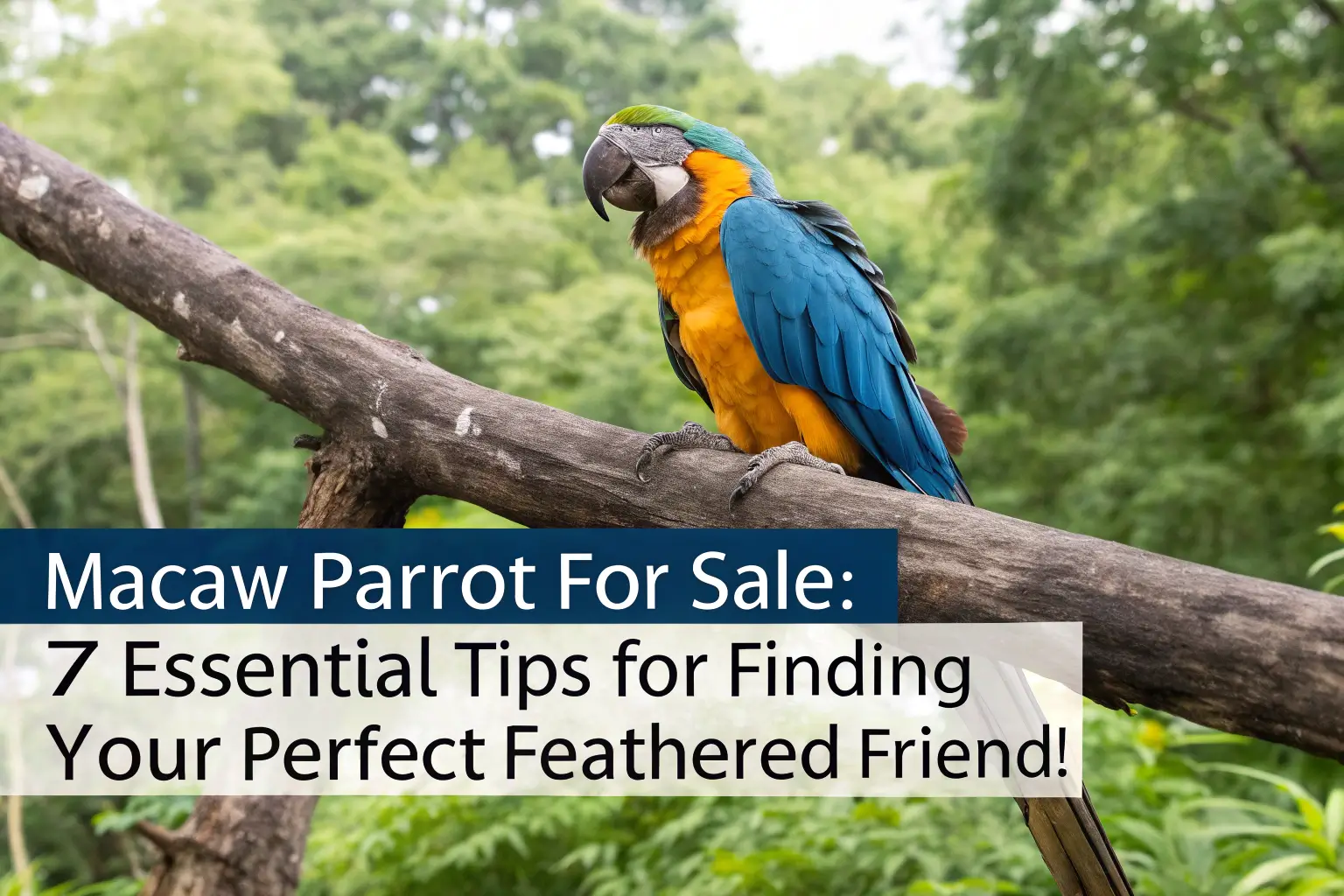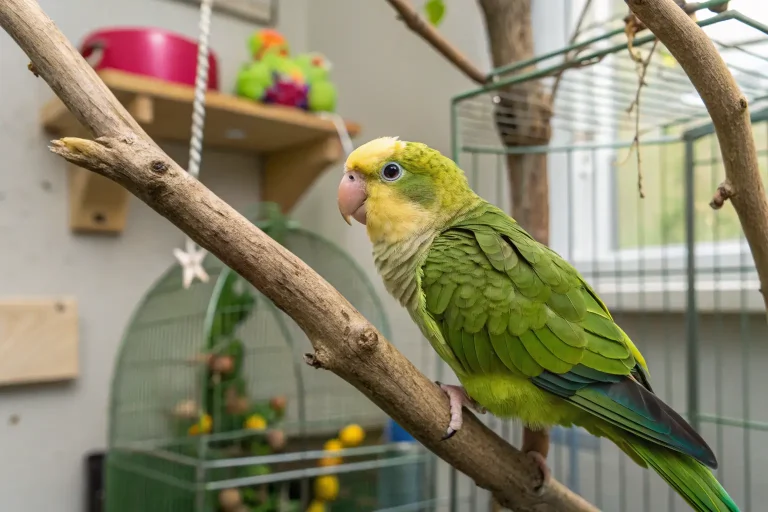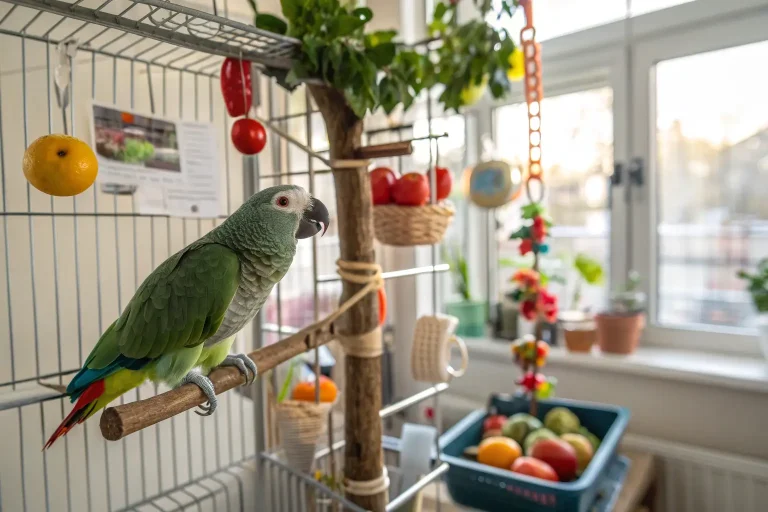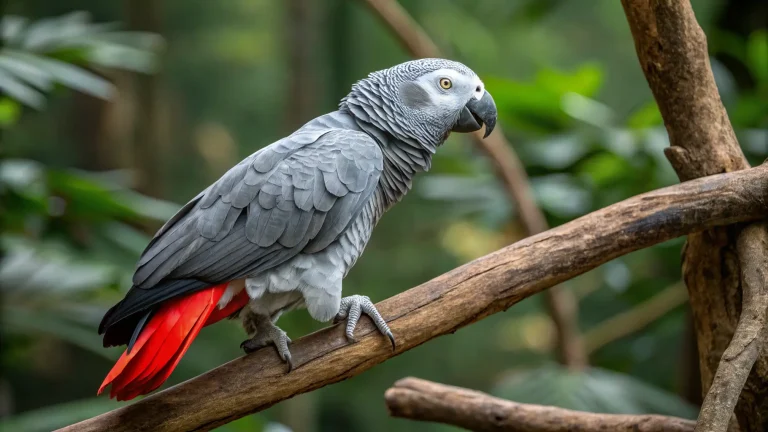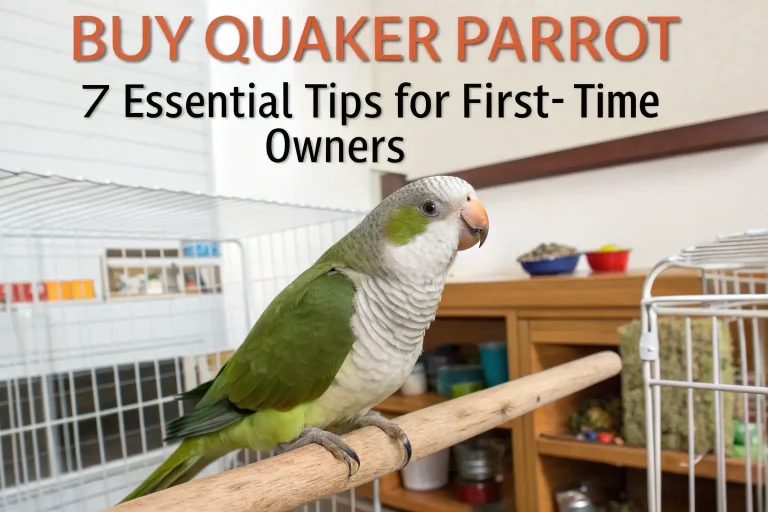Macaw Parrot for Sale: 7 Essential Tips for Finding Your Perfect Feathered Friend!
Are you considering bringing home a magnificent macaw parrot? These vibrant, intelligent birds can become cherished companions for decades, but finding the right macaw parrot for sale requires careful consideration. With their striking plumage, remarkable intelligence, and potential 50+ year lifespan, macaws represent a significant commitment that deserves thoughtful preparation. This comprehensive guide will walk you through everything you need to know before purchasing your perfect feathered companion.
Introduction
Macaws stand as the royalty of the parrot world—magnificent, colorful creatures that command attention with their impressive size and vibrant personalities. These intelligent birds aren’t just pets; they’re companions that can share your life for up to 50-80 years, depending on the species.
The macaw parrot market can be overwhelming for first-time buyers, with prices ranging from $1,000 to over $15,000 depending on species, age, and breeding. Finding a reputable macaw parrot for sale requires understanding both the species’ needs and your own capability to provide proper care.
Did you know that macaws are among the few animals that can recognize themselves in mirrors? This level of self-awareness demonstrates their exceptional cognitive abilities—just one fascinating aspect of these remarkable birds that makes them such sought-after companions.
Species Overview
Scientific Name:
Macaws belong to the family Psittacidae and primarily include birds from six genera: Ara, Anodorhynchus, Cyanopsitta, Primolius, Orthopsittaca, and Diopsittaca.
Physical Characteristics:
Macaws are distinguished by their large size (ranging from 11-40 inches in length), powerful beaks, and long tapering tails. Their most striking feature is undoubtedly their brilliant plumage, which displays vibrant combinations of red, blue, green, yellow, and gold depending on the species. Their facial patches contain intricate patterns of tiny feathers and skin, creating unique “facial fingerprints.”
Primary Macaw Species Available for Sale:
Scarlet Macaw (Ara macao): Predominantly red with yellow and blue wing patches, reaching up to 33 inches in length.
Blue and Gold Macaw (Ara ararauna): Sporting a striking blue top with golden-yellow underparts and a distinctive green forehead.
Green-Winged Macaw (Ara chloropterus): Featuring deep red plumage with green wing coverts and blue flight feathers.
Hyacinth Macaw (Anodorhynchus hyacinthinus): The largest parrot species, with cobalt-blue feathers and yellow eye and beak rings.
Military Macaw (Ara militaris): Primarily green with a red forehead and bright blue flight feathers.
Red-Shouldered Macaw (Diopsittaca nobilis): Among the smallest macaws, with green body, blue wings, and a yellow-orange beak.
Severe Macaw (Ara severus): Medium-sized with mainly green plumage, chestnut-fronted foreheads, and blue wing tips.
Habitat and Distribution
Natural Habitat:
Wild macaws inhabit tropical rainforests, primarily in Central and South America. They thrive in lush forest canopies where they find abundant food sources, including nuts, seeds, fruits, and vegetation. These birds prefer areas with large, mature trees that provide nesting cavities and roosting sites.
Geographic Range:
Different macaw species are distributed throughout Latin America:
- Scarlet Macaws range from southern Mexico through Peru and Brazil
- Blue and Gold Macaws inhabit Panama, Colombia, Venezuela, Brazil, Bolivia, and Paraguay
- Hyacinth Macaws are primarily found in Brazil’s tropical wetland regions
- Military Macaws populate forests from Mexico to north-western South America
Adaptations:
Macaws have evolved specialized adaptations for their tropical lifestyle. Their powerful beaks can crack the toughest nuts and seeds, while their zygodactyl feet (two toes forward, two backward) provide exceptional grip for navigating tree branches. Their striking colors, while appearing flashy to humans, actually provide excellent camouflage among tropical flowers and foliage. Some macaw species even consume clay from riverbanks to neutralize toxins in their diets.
Diet and Feeding Habits
What They Eat:
In the wild, macaws maintain a diverse diet including:
- Nuts (particularly Brazil nuts, walnuts, and almonds)
- Seeds and grains
- Tropical fruits (including berries, guava, and papaya)
- Leafy greens
- Flowers and nectar
- Occasionally insects and small invertebrates
When considering a macaw parrot for sale, understand that captive macaws require a similarly varied diet. Commercial pelleted food should form the foundation (about 60-70%), supplemented with fresh fruits, vegetables, nuts, and occasional protein sources.
Foraging Behavior:
Wild macaws spend significant portions of their day searching for food. They travel impressive distances—sometimes up to 60 miles daily—to find seasonally available foods. This foraging instinct remains strong in captive birds, who benefit from puzzle feeders and foraging toys that stimulate natural behaviors.
Dietary Needs:
Macaws require a calcium-rich diet to support their large skeletal structure and prevent problems like feather plucking. Their nutritional requirements change throughout their lifecycle, with breeding birds needing additional protein and calcium. Avian-specific vitamins are often necessary supplements, particularly for birds without regular sun exposure.
Behavior and Social Structure
Social Behavior:
Macaws are intensely social creatures that form strong pair bonds in the wild and travel in flocks of 10-30 birds. This social nature translates to captivity, where they develop deep attachments to their human caregivers. When searching for a macaw parrot for sale, remember these birds require several hours of daily interaction to remain mentally healthy.
Communication:
These intelligent birds employ a sophisticated communication system including:
- Loud vocalizations (squawks, screams, and calls) that can travel several miles in the wild
- Subtle body language including feather fluffing, pinning eyes, and head bobbing
- Mimicry of human speech and environmental sounds
- Complex facial expressions using their mobile facial feathers
Potential macaw owners should prepare for noise levels that can reach 105-115 decibels—comparable to a rock concert or chainsaw.
Mating and Reproduction:
Macaws are monogamous birds that mate for life, typically breeding once yearly during the rainy season. They nest in tree cavities where females lay 2-3 eggs, incubating for approximately 25-28 days. Both parents participate in raising chicks, which remain in the nest for 3-4 months before fledging. Sexual maturity ranges from 3-5 years, depending on the species.
Conservation Status

Endangerment Level:
Many macaw species face significant conservation challenges:
- The Blue-throated Macaw is Critically Endangered with fewer than 250 remaining in the wild
- The Hyacinth Macaw is Vulnerable with an estimated wild population of 6,500
- The Great Green Macaw is Endangered with fewer than 3,400 remaining
- The Scarlet Macaw has varying regional status from Near Threatened to Critically Endangered
Threats:
Wild macaw populations face multiple threats:
- Habitat destruction through deforestation and agricultural expansion
- Illegal wildlife trafficking for the pet trade
- Hunting for feathers and meat
- Climate change affecting food availability and nesting sites
Conservation Efforts:
Multiple organizations work to protect wild macaw populations:
- The World Parrot Trust implements recovery programs for threatened species
- Conservation breeding programs help maintain genetic diversity
- Protected areas in South and Central America provide crucial habitat
- CITES (Convention on International Trade in Endangered Species) regulates international trade
When looking for a macaw parrot for sale, ensure you’re purchasing from a reputable breeder with proper documentation. Never buy illegally imported birds.
Interesting Facts
Macaws can exert over 500-700 pounds per square inch of pressure with their beaks—enough to crack coconuts and Brazil nuts.
Their incredible color vision exceeds human capabilities, allowing them to see ultraviolet light invisible to us.
Unlike many animals, macaws can remember the locations of hundreds of food sources across vast territories and recall them seasonally.
Some macaw species regularly eat clay from riverbanks (called “clay licks”) to neutralize toxins in seeds and fruits they consume.
Macaws possess remarkable problem-solving abilities comparable to those of a 4-5 year old human child.
Ancient Mesoamerican civilizations, including the Maya and Aztec, revered macaws as sacred beings and symbols of fire and sun.
The largest macaw, the Hyacinth, has a wingspan exceeding 4 feet and can weigh up to 3.7 pounds.
Tips for Caring for Your Macaw
1. Housing Requirements
When searching for a macaw parrot for sale, prepare appropriate housing first. Macaws require spacious cages with minimum dimensions of 5’W × 3’D × 6’H for larger species. The cage should allow full wing extension and be constructed from chew-resistant materials like stainless steel. Include multiple perches of varying diameters and materials to promote foot health.
2. Environmental Enrichment
Macaws have highly active minds requiring constant stimulation. Provide rotation of foraging toys, puzzle feeders, and destructible items they can safely shred. Without adequate enrichment, macaws may develop behavioral problems including screaming, feather plucking, and aggression.
3. Health Considerations
Common health issues include:
- Psittacosis (bacterial infection transmissible to humans)
- Psittacine Beak and Feather Disease (PBFD)
- Aspergillosis (fungal infection)
- Proventricular Dilatation Disease (PDD)
- Nutritional deficiencies
Establish a relationship with an avian veterinarian before purchasing a macaw and budget for annual exams ($100-300) plus emergency care.
4. Training and Socialization
Begin training immediately after bringing your macaw home. Use positive reinforcement techniques to establish boundaries and basic commands. Proper socialization prevents single-person bonding issues common in macaws.
5. Diet Management
Feed your macaw a balanced diet consisting of:
- 60-70% high-quality pellets
- 20-30% fresh vegetables and fruits
- 5-10% nuts, seeds, and healthy treats
- Fresh water daily, changed multiple times
6. Exercise Requirements
Macaws need minimum 2-3 hours outside their cage daily for proper physical and mental health. Create a safe “play area” with climbing structures, toys, and interaction opportunities.
7. Long-term Commitment
With lifespans of 50-80 years, macaws often outlive their owners. Develop a succession plan addressing your bird’s future care in your estate planning.
Role in the Ecosystem
Ecological Importance:
Macaws perform crucial ecological functions:
- Seed dispersal: After consuming fruits, macaws distribute undigested seeds through their droppings, often miles from parent plants
- Forest regeneration: Their feeding habits open forest canopies, allowing sunlight to reach lower levels
- Plant pollination: While feeding on flowers and nectar, macaws transfer pollen between plants
- Natural pest control: They consume certain insects and invertebrates
Impact of Decline:
The reduction in wild macaw populations has measurable ecosystem effects:
- Decreased regeneration of certain plant species dependent on macaws for seed dispersal
- Altered forest composition with reduced diversity
- Disruption of food webs affecting multiple species
- Loss of cultural significance for indigenous communities who have existed alongside macaws for millennia
Conclusion
Finding the perfect macaw parrot for sale represents just the beginning of what could become a lifelong relationship spanning decades. These magnificent birds offer unparalleled companionship, intelligence, and beauty—but require equally exceptional commitment from their human caregivers.
Before welcoming a macaw into your home, honestly evaluate your ability to provide the space, time, financial resources, and emotional investment these birds demand. Research reputable breeders, consider adoption options for rehomed birds, and perhaps volunteer at a parrot sanctuary to gain hands-on experience.
If you’re prepared for the beautiful chaos that accompanies macaw ownership, you’ll discover a relationship unlike any other—one filled with intelligence, humor, affection, and the vibrant energy these rainbow-colored companions bring into our lives.
Frequently Asked Questions
How much does a macaw parrot typically cost?
Macaw prices vary significantly by species. Budget-friendly options like Severe Macaws might start around $1,000-2,000, while Blue and Gold Macaws typically range from $2,500-4,000. Scarlet Macaws and Green-Winged Macaws generally cost $3,000-5,000. The rare Hyacinth Macaw commands premium prices between $10,000-15,000. These initial costs represent only the purchase price—budget an additional $2,500-3,500 annually for food, veterinary care, and supplies.
Are macaws good pets for beginners?
Macaws are generally not recommended for first-time bird owners due to their complex care requirements, powerful beaks, loud vocalizations, and long-term commitment. Their intelligence requires consistent training and enrichment, while their sensitivity makes them prone to behavioral issues if improperly handled. Consider starting with a more forgiving species like a cockatiel or conure before pursuing a macaw parrot for sale.
How long do macaws live?
With proper care, macaws are remarkably long-lived birds. Smaller species like Severe Macaws typically live 30-40 years, while medium-sized species like Blue and Gold Macaws average 50-60 years. The largest species, including Hyacinth Macaws, can live 70-80 years or more in captivity. This exceptional longevity means your macaw may require provisions in your estate planning.
Do macaws talk like other parrots?
Many macaws develop impressive speaking abilities, though clarity varies by individual and species. Blue and Gold Macaws typically develop vocabularies of 15-20 words with reasonable clarity. Scarlet Macaws and Green-Winged Macaws often learn fewer words but may mimic household sounds effectively. While not as clear as African Greys or Amazon parrots, macaws compensate with expressive body language and contextual communication.
How much space does a macaw need?
Macaws require substantial space—both in cage dimensions and flying area. Minimum cage requirements for larger species start at 5’W × 3’D × 6’H, though larger is always better. Additionally, macaws need daily out-of-cage time in a bird-proofed room where they can stretch their wings, which can span up to 4 feet in larger species. Without adequate space, macaws develop behavioral problems and decreased physical health.
Are macaws noisy?
Macaws are among the loudest companion birds, capable of vocalizations reaching 105-115 decibels. Their calls, designed to travel miles in rainforest habitats, include morning and evening “contact calls” that can be particularly intense. While training can moderate screaming, their natural vocalizations remain loud. Consider proximity to neighbors and household members’ sensitivity to noise before pursuing a macaw parrot for sale.
Can macaws be kept with other pets?
While individual temperaments vary, macaws can coexist with other pets under careful supervision. Many macaws develop positive relationships with dogs, though introductions must be gradual and always supervised. Cats present higher risk due to predatory instincts. Other bird species may be compatible housing companions if introduced properly, though different macaw species often pair well together given adequate space.
